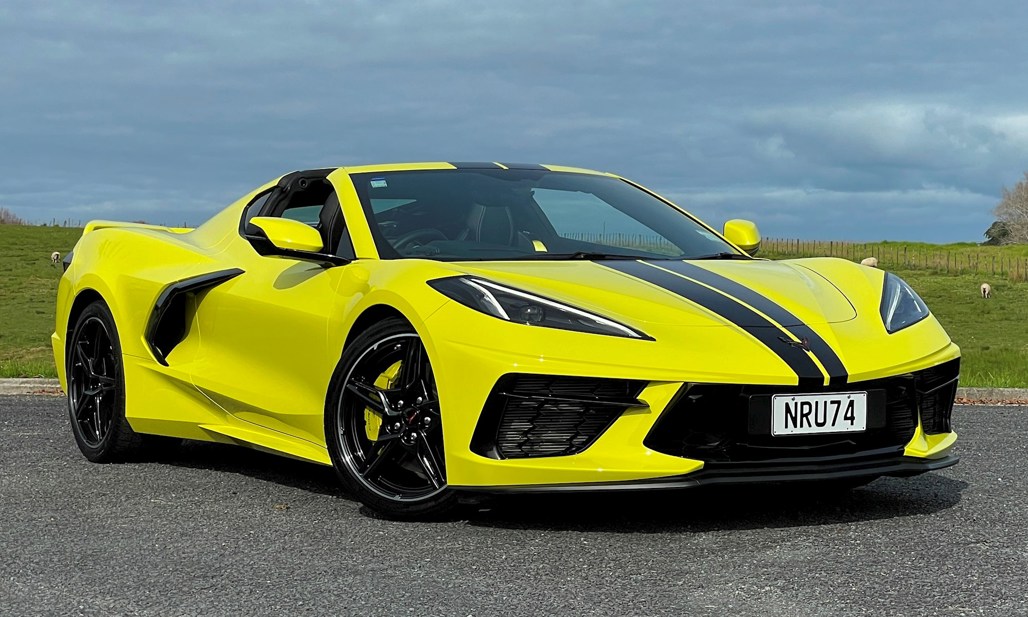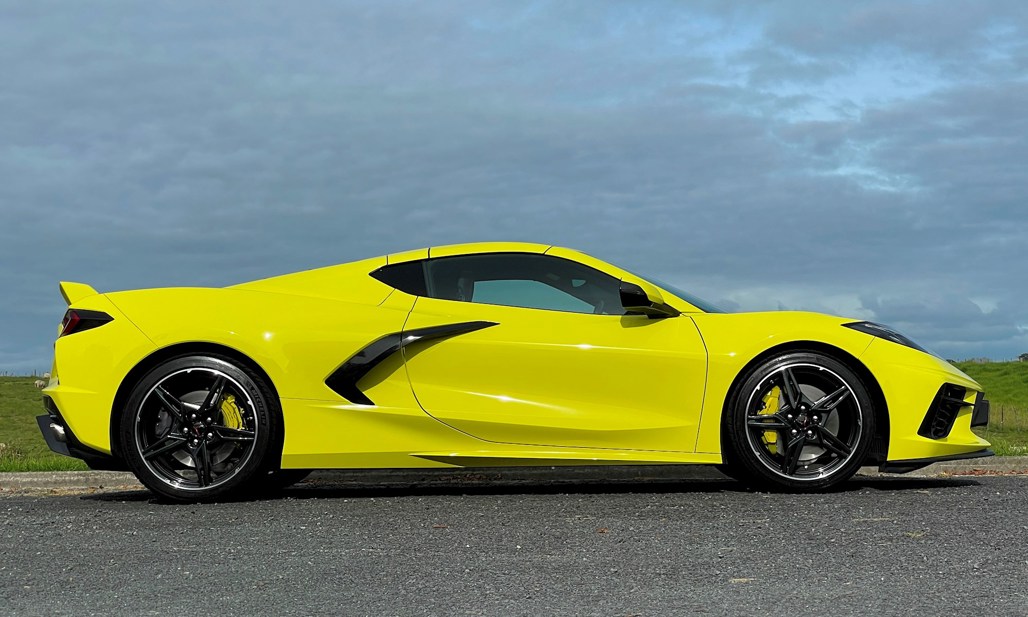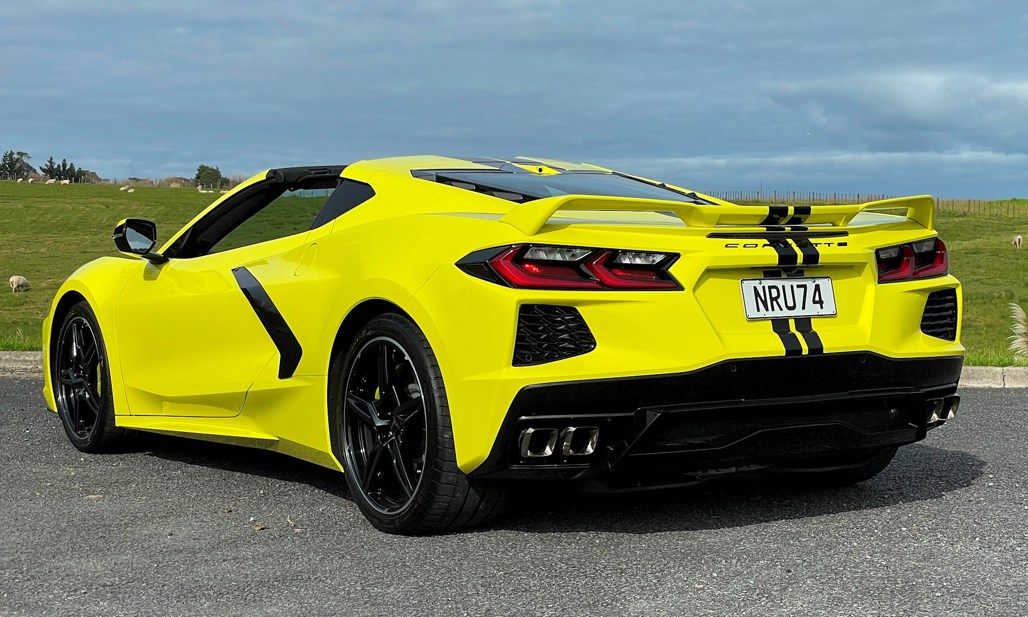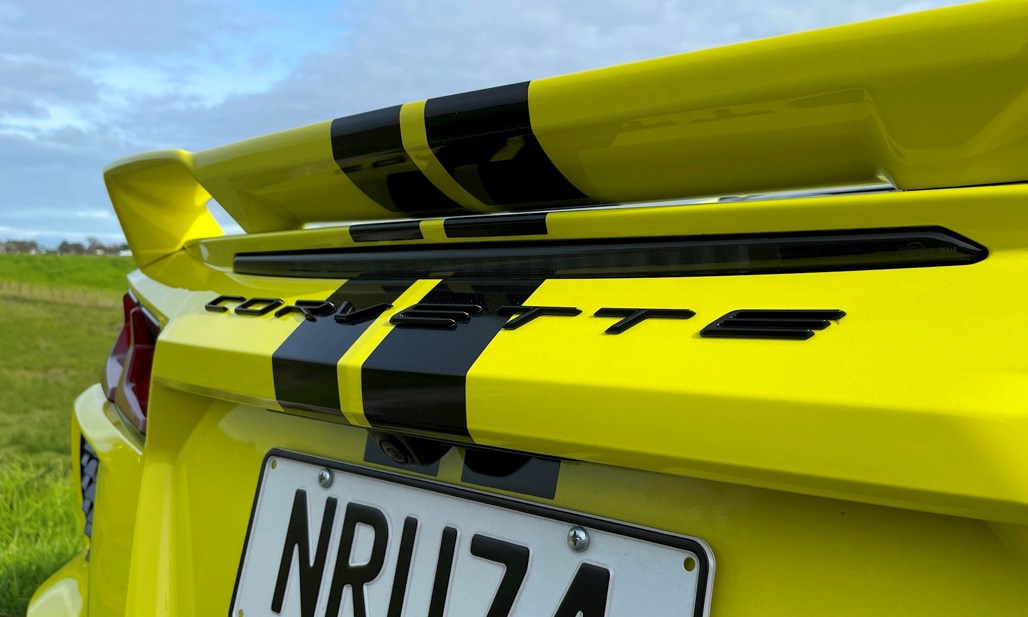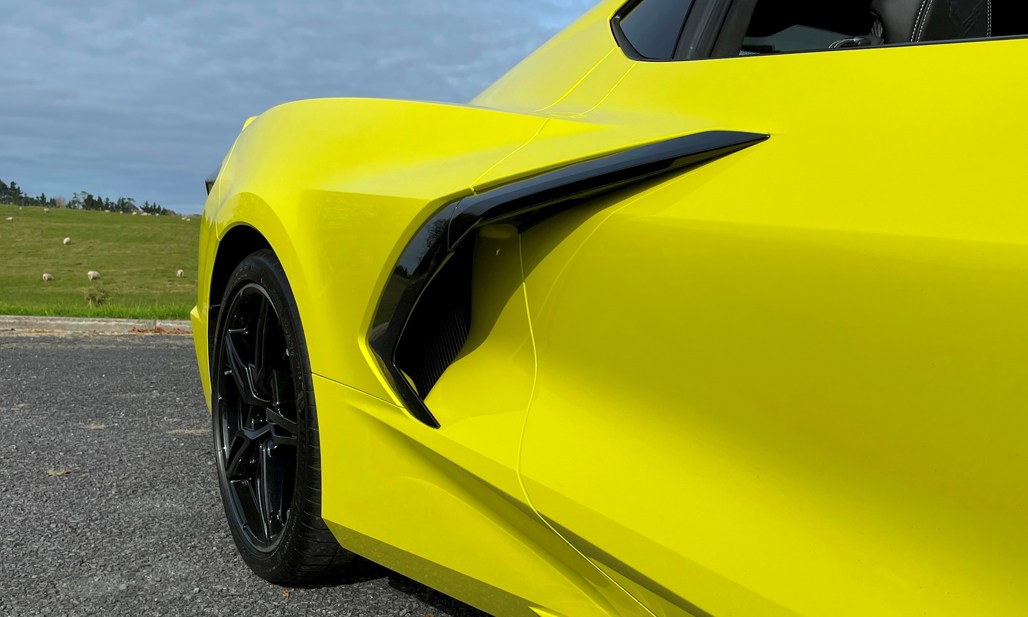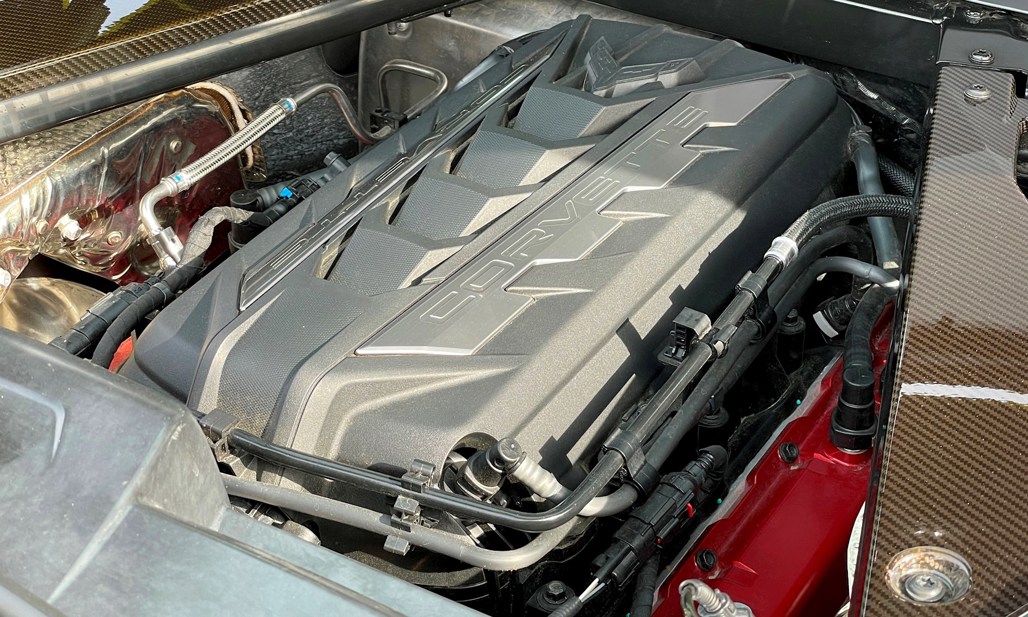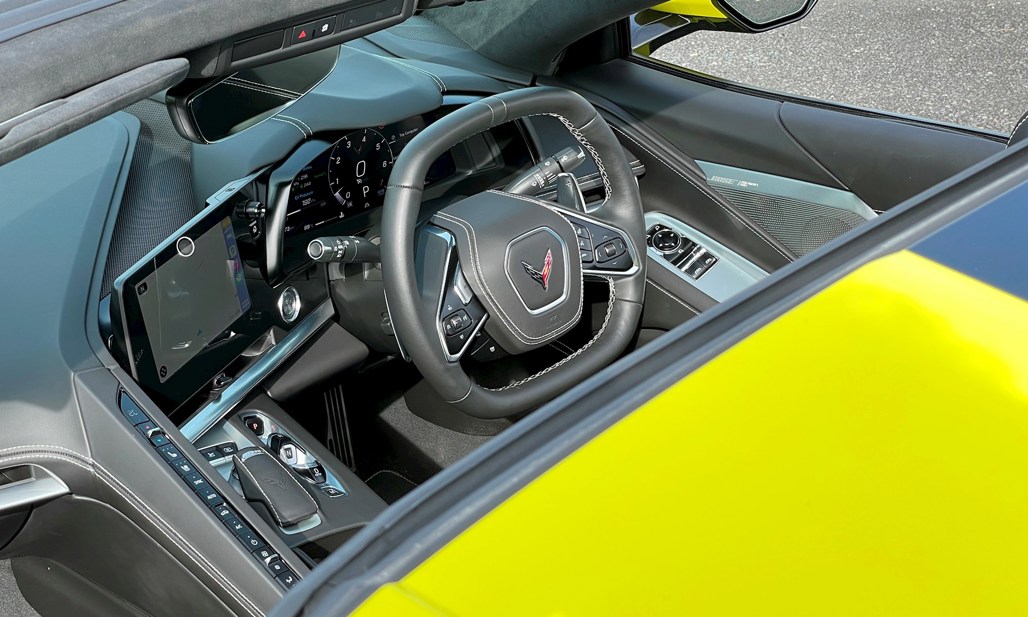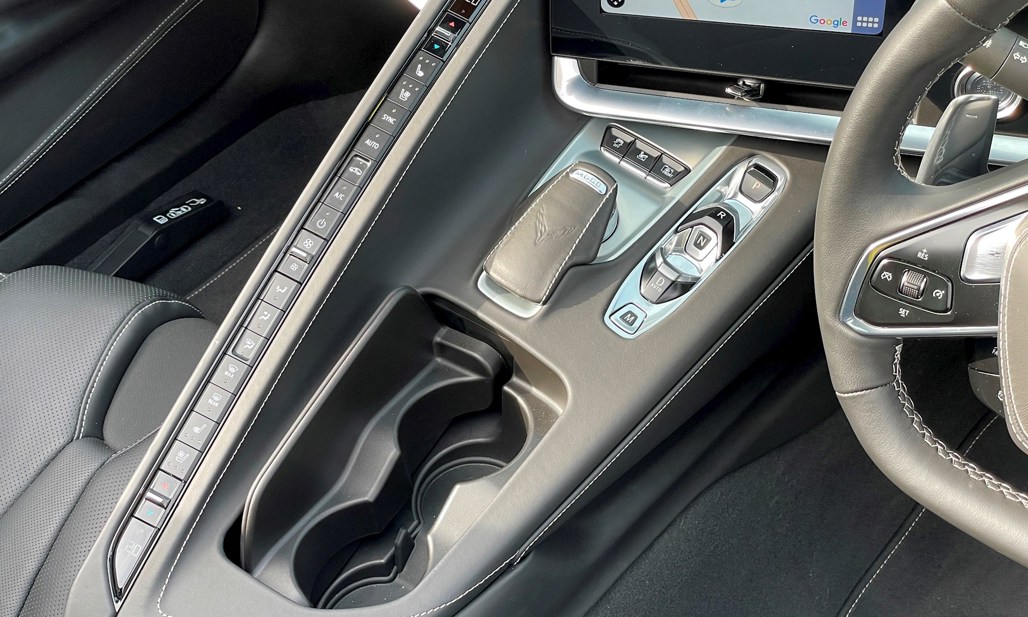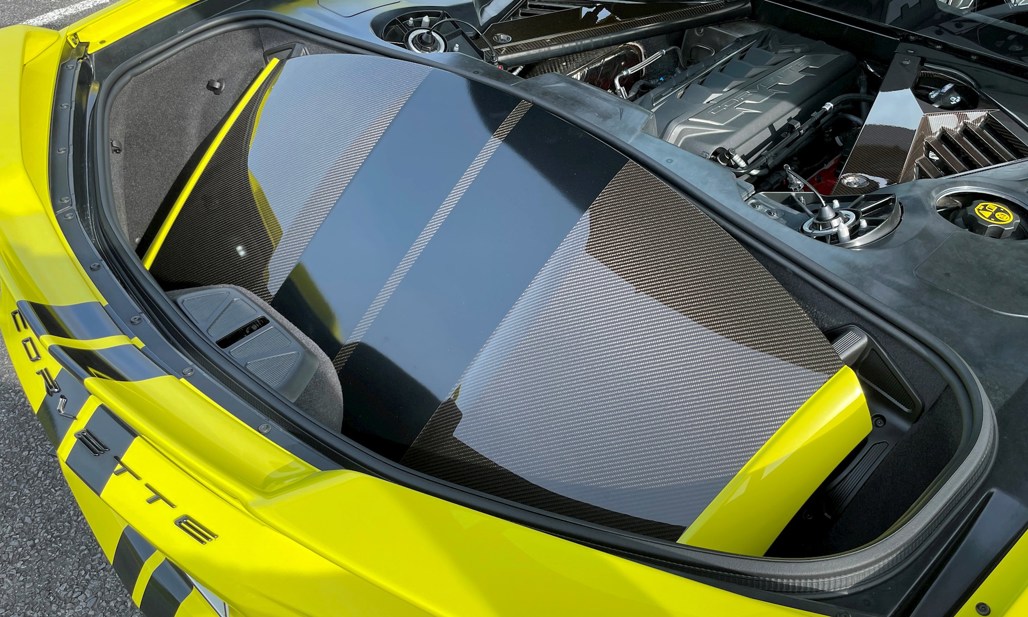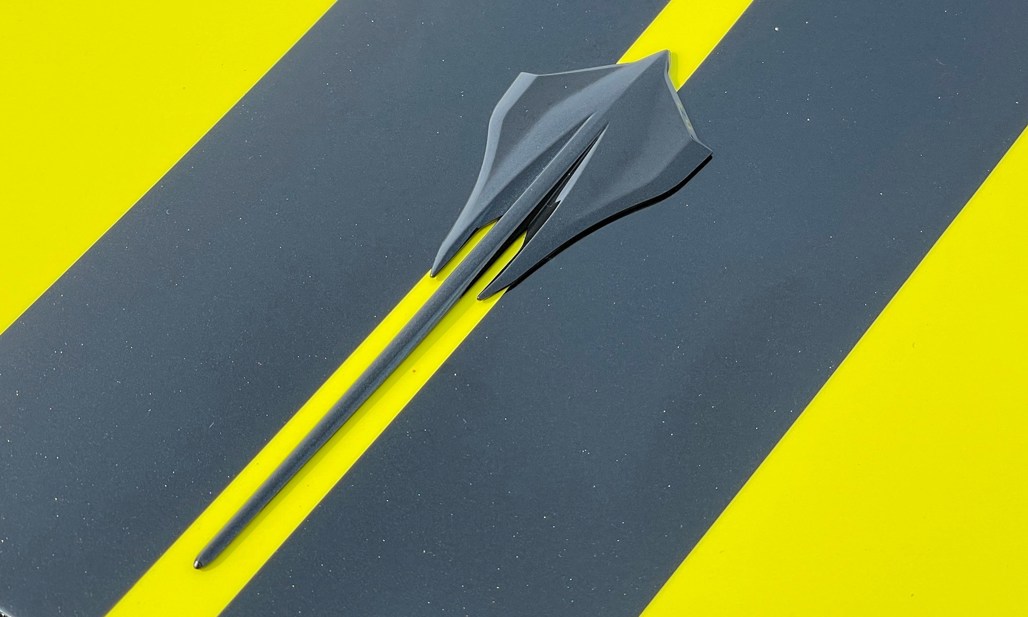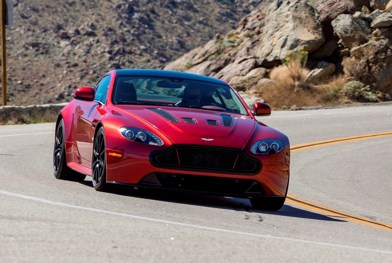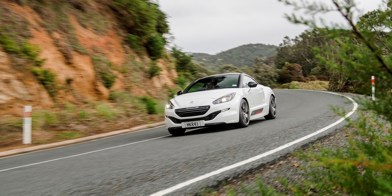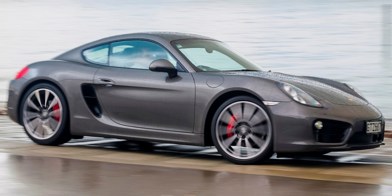There have been two headline changes to the C8 Chevrolet Corvette Stingray: the engine is now in the middle and the steering wheel is now offered from the factory on the right.
One of these things is momentous, and it’s not the position of that big V8. In fact, the desire for a mid-mounted engine has been part of Corvette research and development since the C1 in the 1950s, with many concept cars and a few false starts along the way.
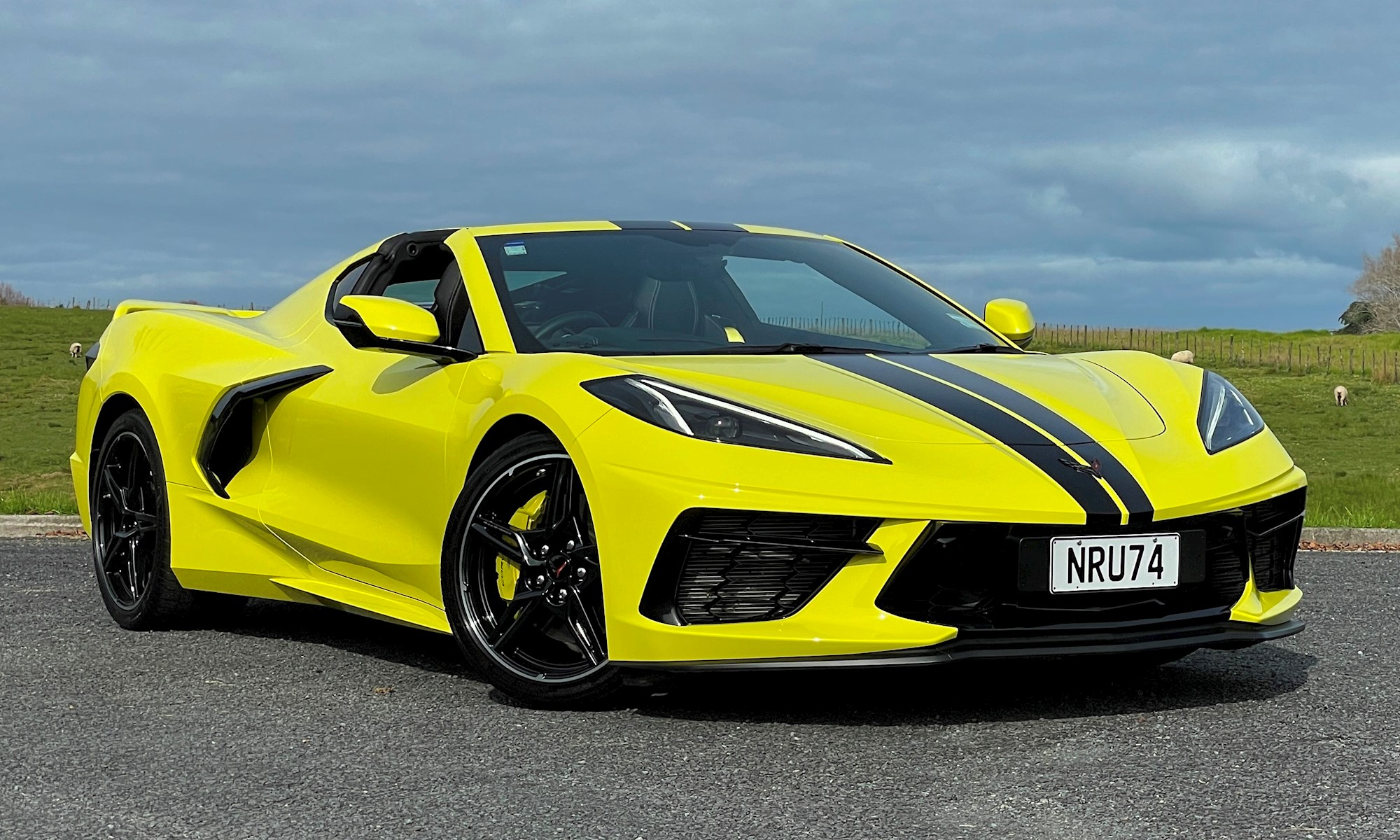
So don’t think of the C8 as Chevrolet over-reaching into Ferrari and Lamborghini supercar territory. Just think of it as the Corvette the way it was always supposed to be.
The fact you can now buy it in right-hand drive, with full factory warranty and local distributor support (GMSV in New Zealand’s case), is far more important. As an aside, the buzzy bee you see before you was actually the first right-hook Corvette to be registered in NZ.
General Motors could happily sell left-hand drive Corvettes to Americans forever more, but it’s now signalling an ambition for Corvette to cater to global tastes and be an internationally recognised sports car. Especially now we know there’ll be a hybrid version in 2023 and a pure-electric model to follow.
For now, the C8 sticks with an old-school 6.2-litre V8. We say “old-school” because this 2LT motor is still a pushrod design (Americans seem to like those). But it’s also a brand new engine.
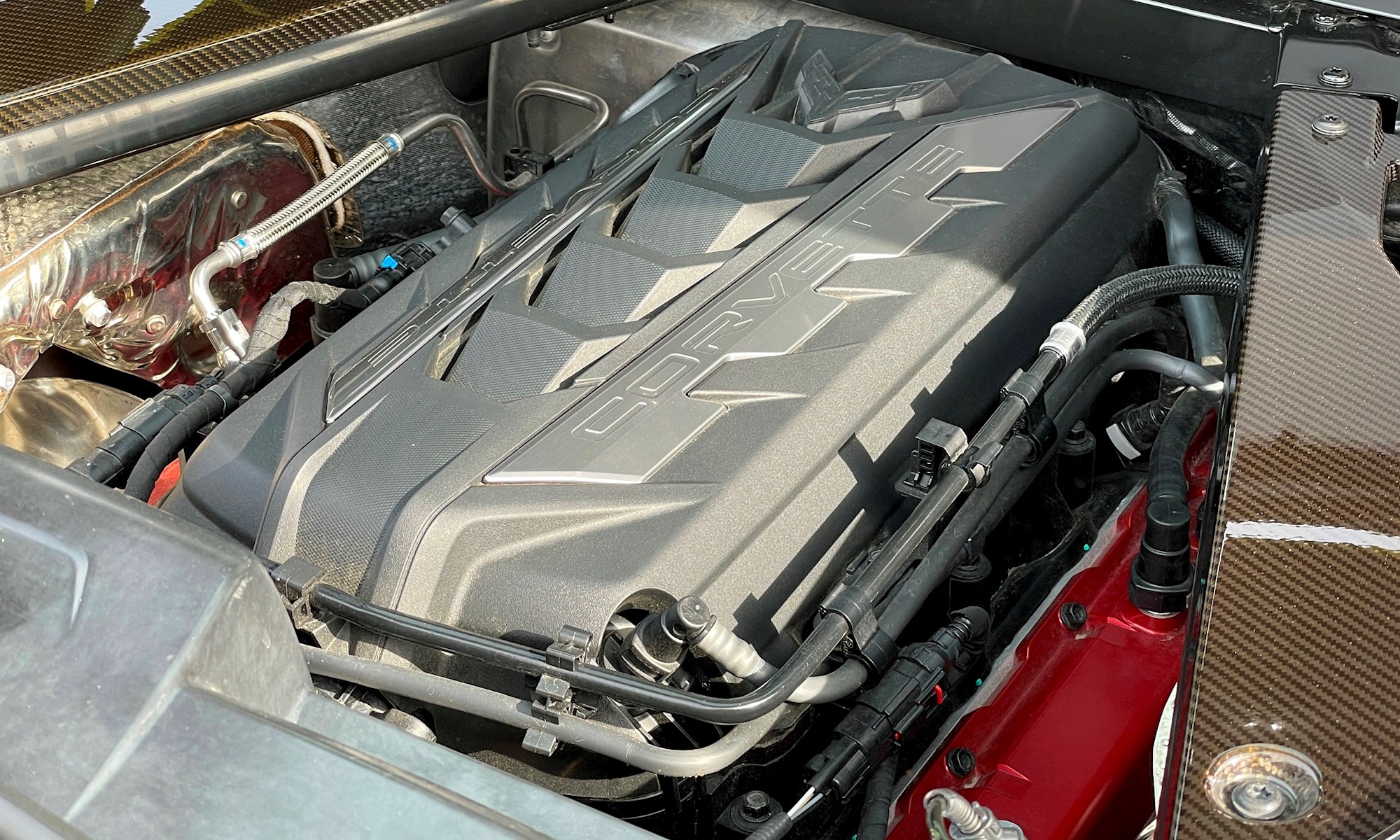
It’s also rather brilliant, in a very modern context. It feels authentic in a muscle-car way, but it’s also linear, responsive and (most importantly) free-spinning right up to 6000rpm. It brings old-world charm right together with modern expectations of how a performance engine should behave.
The dual-clutch eight-speed transmission plays a big part in this powertrain brilliance. You might be surprised to hear that it’s faultlessly smooth and generally avoids full-throttle clutch-slamming antics, even in the sportier drive modes. It’s content to do the work, sit back and let the engine be the star.
The chassis is also impressive. The C8 is based around a strong aluminium structure, with a little semi-exotic strengthening from carbon fibre down the spine and across the back. It’s a great base to work from, especially with the Z51 Performance Package that comes as standard on the NZ cars: uprated suspension, larger brakes and Michelin Pilot Sport 4 tyres, plus extra aero and engine cooling. It’s a track pack, basically.
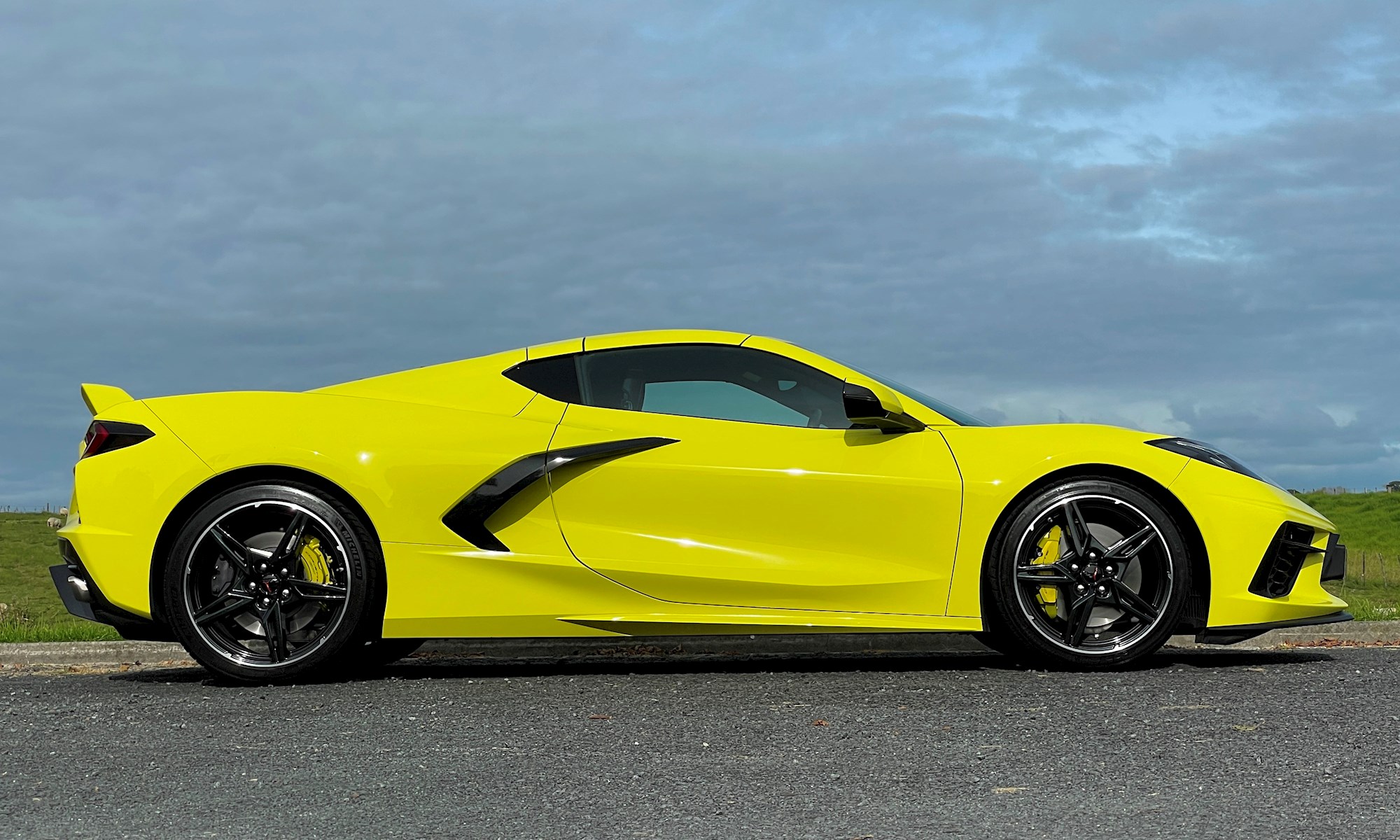
The Z51 Package also brings a front-end lifter, which is noisy but quick and boasts GPS location recognition – so you can set it to raise automatically at your driveway, for example. It works well, but funnily enough you don’t really need it. There’s plenty of clearance at front for all but the most extreme obstacles; during our test time, the ’Vette sailed over vehicle entrances at standard ride height that have made Aston Martins and Porsches quiver in fear.
Sounds serious and it is. There’s massive grip from the fat Michelin rubber, but not at the cost of chassis sophistication. Nor is there any sign of the sudden-death handling that some mid-engined cars are famous for: the C8 actually feels quite playful and communicative, with changes in attitude clearly telegraphed.
Magnetic Selective Ride Control is standard. Yep, just like a Ferrari (or more appropriately, just like those HSVs from olden times). It provides customisation via the drive modes, but the real beauty of this technology is its ability to adapt to changing conditions instantly, meaning the C8 maintains a great balance between everyday comfort and stability in extremis without you having to think a whole lot about it.
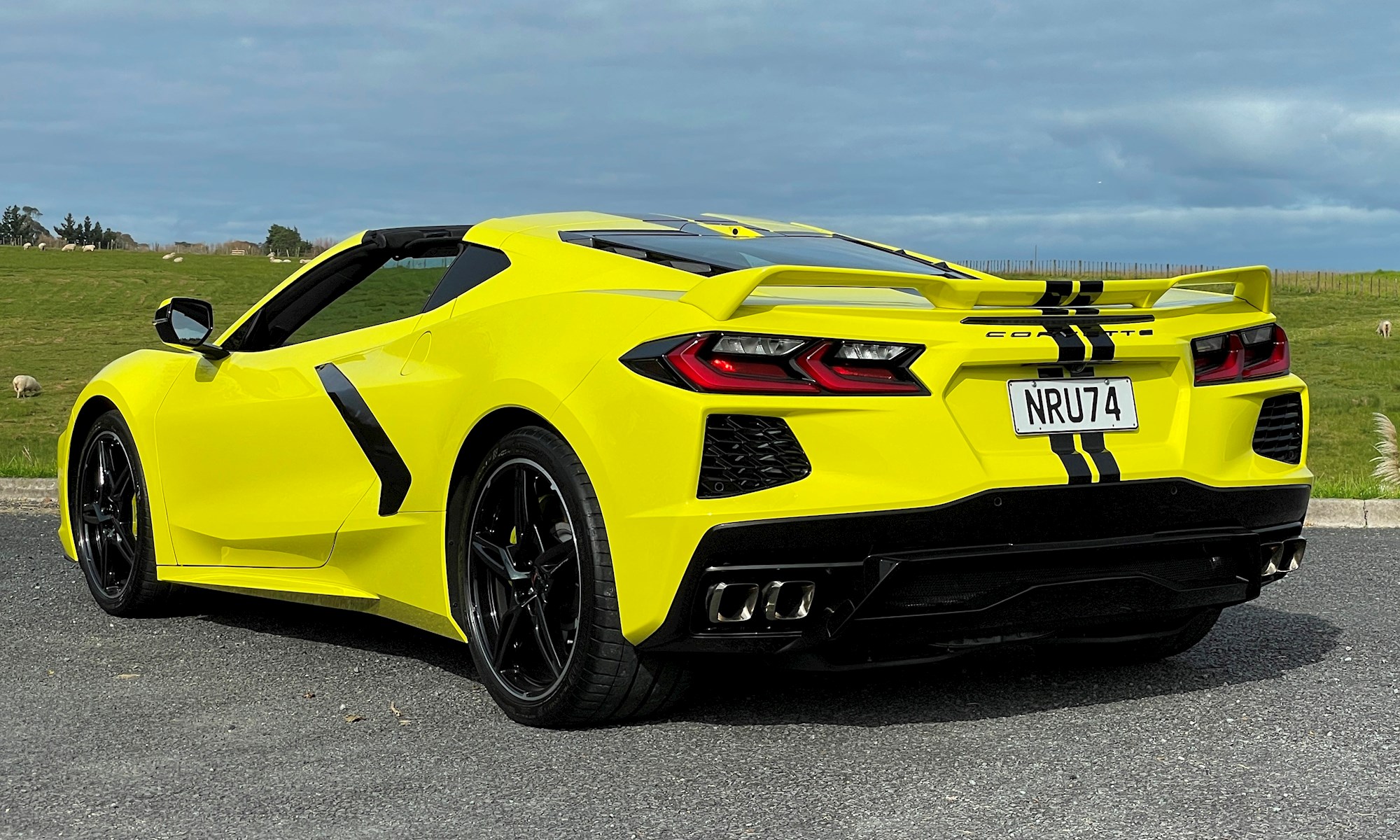
If there’s a weak point it’s the steering, although it depends on your expectations. The rack is quick and the nose turns in with alacrity/accuracy, but there’s isn’t the finesse and communication you might expect from a mid-engined machine. It’s decent enough for a quick coupe, but falls short of sports-car prowess.
But then, the Corvette is arguably more the former than the latter anyway, whatever the low-slung styling might say. Practicality has always been key to the model’s appeal.
Actually, this one’s not a coupe at all. It’s the convertible version, with a single-piece hard-top that easily detaches and can be stowed in the luggage area behind the engine. Said cargo space is quite generous – it was designed to fit two golf bags (oh dear) – but of course it’s all but useless with the roof stowed.
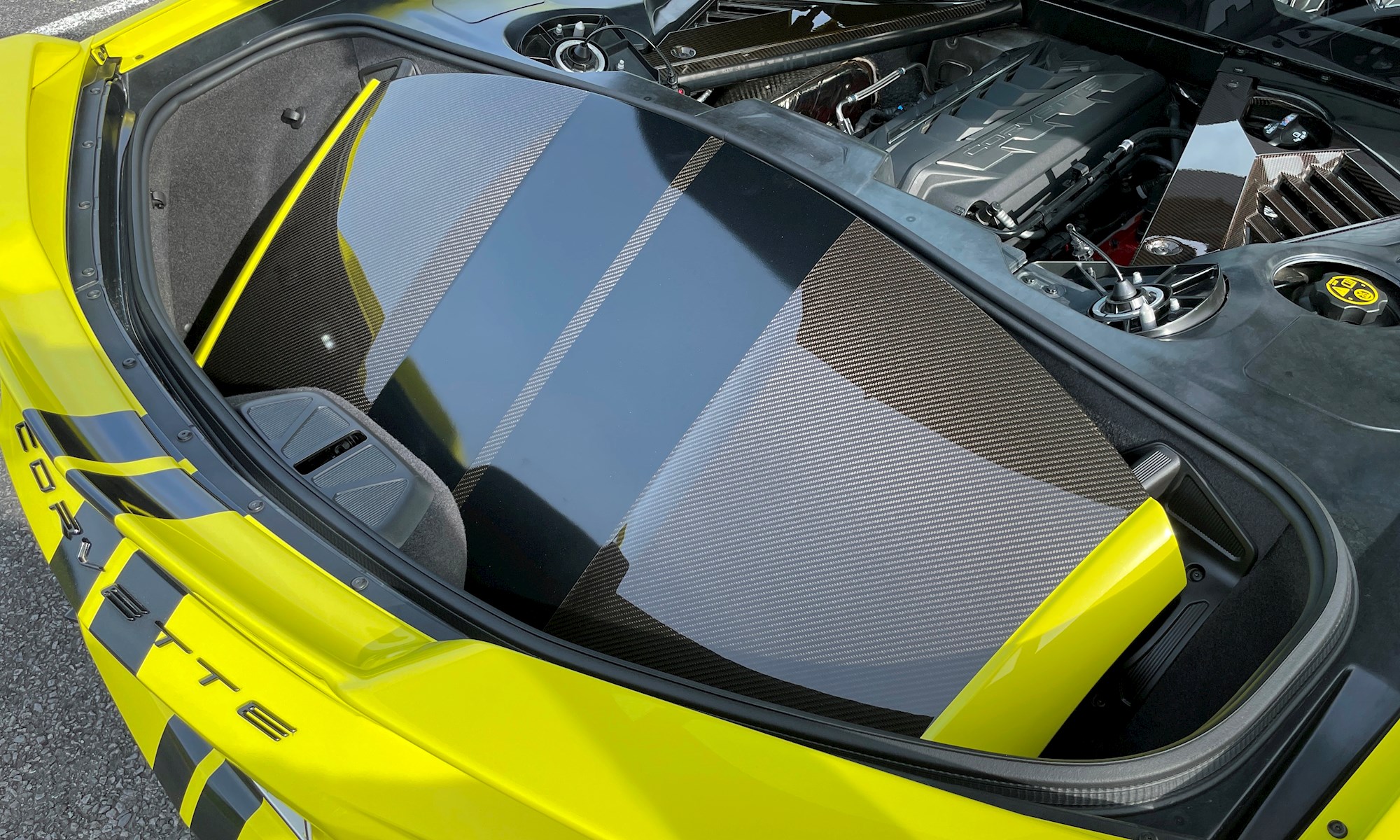
The C8 also has a frunk at the other end, which is deep and plenty big enough for an overnight case or a bunch of soft bags. GM doesn’t quote capacity figures for the two holds separately, but together they’re 358 litres, which is pretty useful. About the same as a Toyota Corolla hatchback, in fact.
In tricked-up 3LT specification the C8 cabin is pretty swish: good quality materials and crisp virtual instruments that change configuration depending on the drive mode. The square steering wheel is kinda cool, as well as liberating extra legroom for the driver.
But the switchgear is daunting: the high, narrow line of climate buttons that separate driver and passenger are fiddly and other physical controls have kind of just been thrown at the dashboard and console. Given the likely age demographic of a Corvette buyer, it’s also a bit of a worry that you can hardly read some of the graphics.
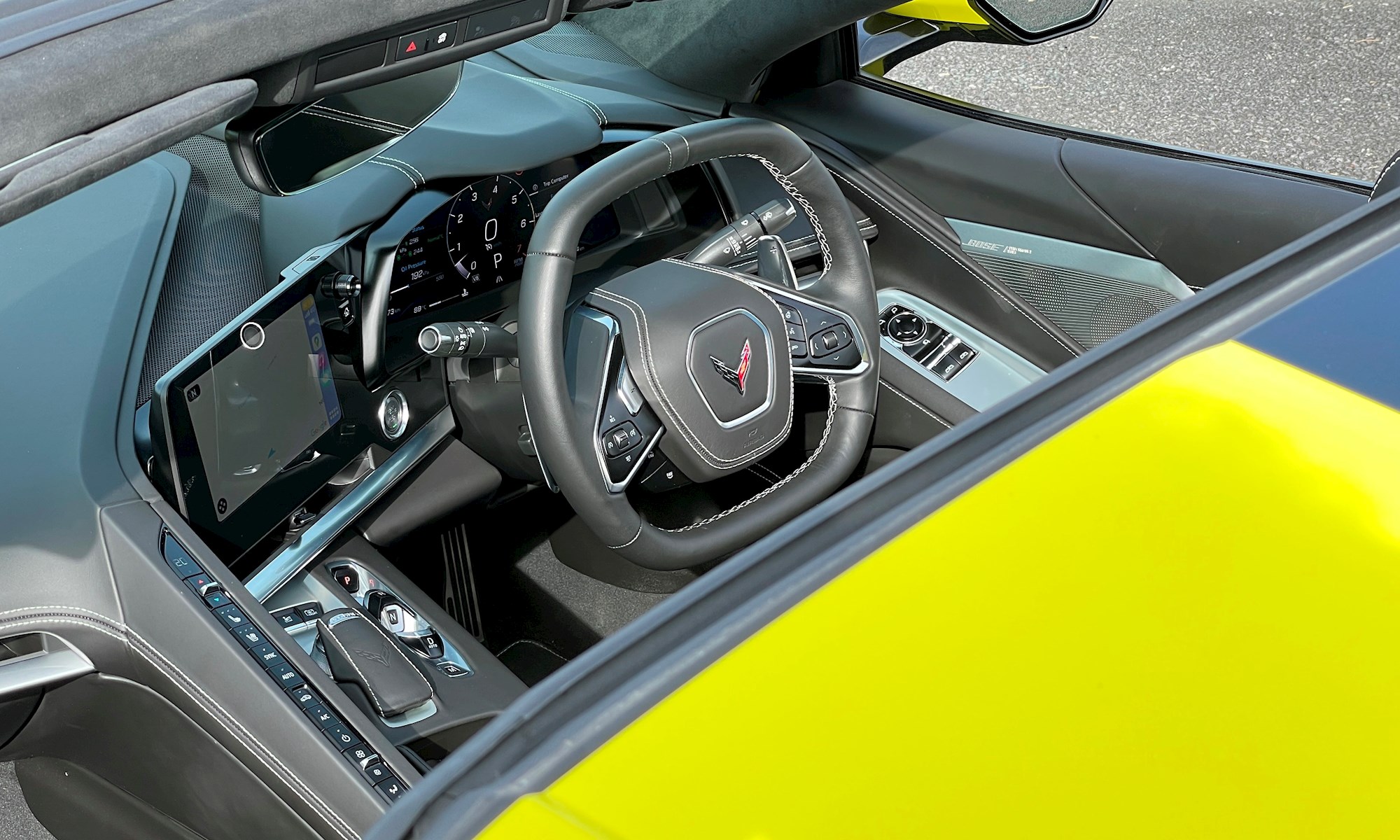
It’s an intimate cabin, but the seating position is strangely high. You sit reclined in truly sporting fashion, but if you’re 180cm-plus the squab height puts your head quite close to the roof. It’s not uncomfortable and certainly not a deal-breaker; but you can’t help wonder why the driver can’t sit a little lower… in such a low car.
It’s probably unfair to be grumbling about small practicalities in such a driver-focused car, but the genius of the Corvette is that it has a foot in two camps: everyday driver and Sunday blaster. So those little things do matter, because it is indeed a car you might drive every day. So what we’re saying is that those complaints are a compliment to the C8… in a way.
The Corvette is an enormously loveable car because (a) it’s really great to drive and (b) there’s nothing quite like it. It’s configured like an Italian supercar, but our 3LT convertible (nothing to do with the “2LT” name of the V8 engine, by the way) is half the price of a comparable mid-engined Ferrari or Maserati.
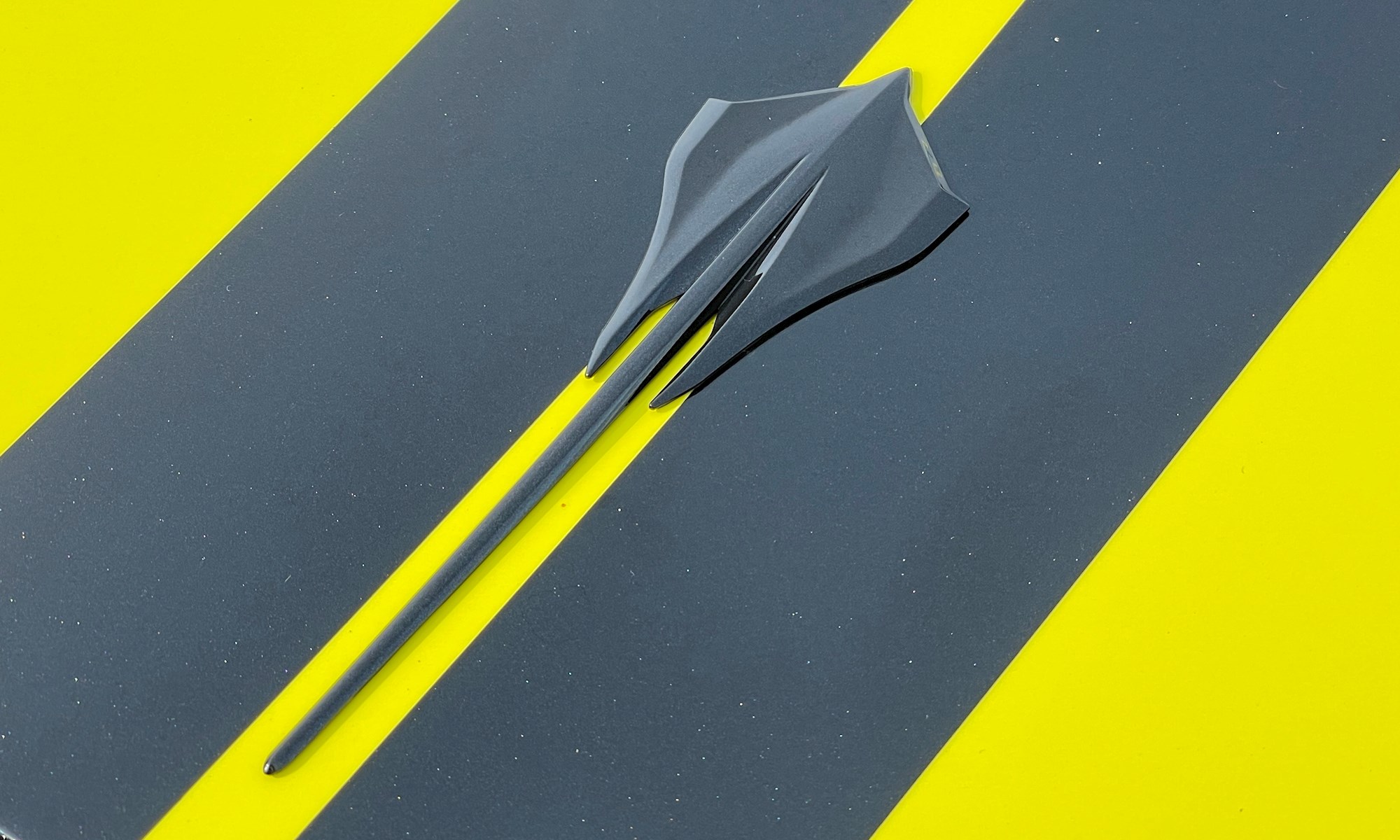
Price-wise, it’s more a rival for fast, front-engined coupes. A very different thing again, mind, but also a laugh-out-loud bargain in relative terms.
CHEVROLET CORVETTE STINGRAY 3LT
ENGINE: 6.2-litre petrol V8
POWER: 369kW/637Nm
GEARBOX: 8-speed automated dual-clutch, RWD
0-100KM/H: 3.7 seconds
ECONOMY: 12.1l/100km (WLTP)
PRICE: $184,990

